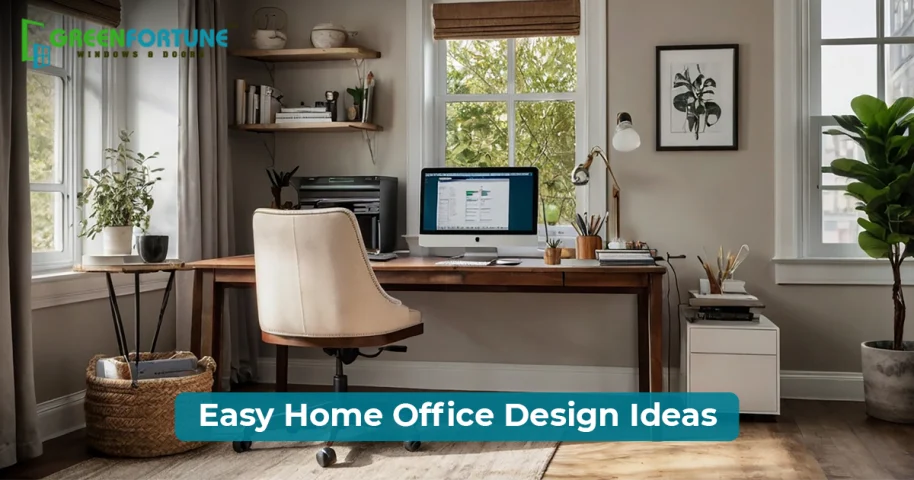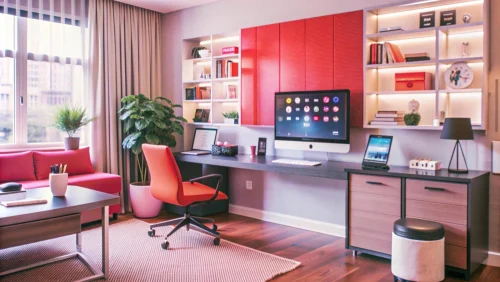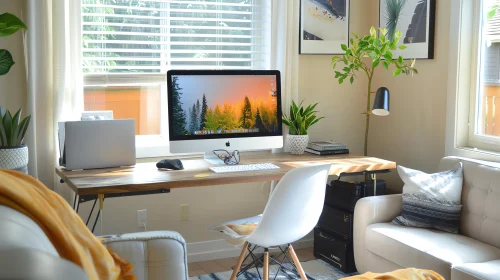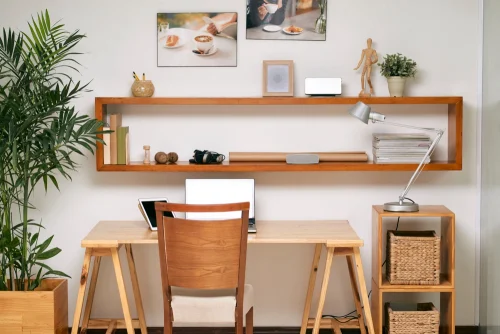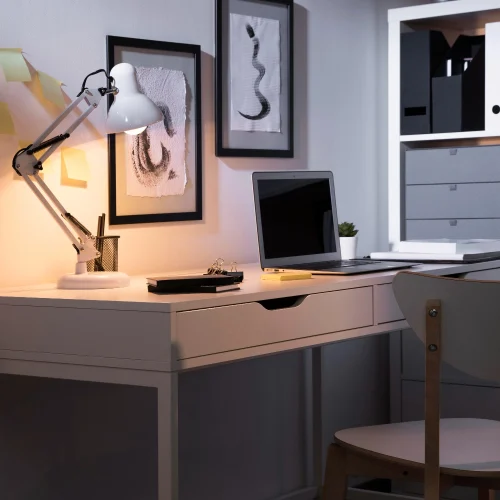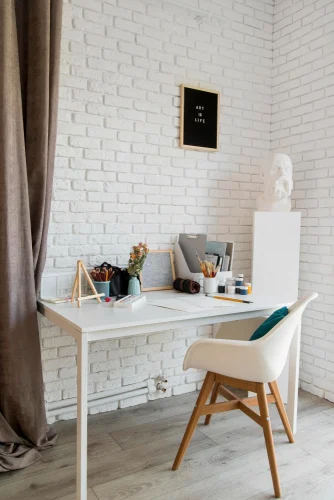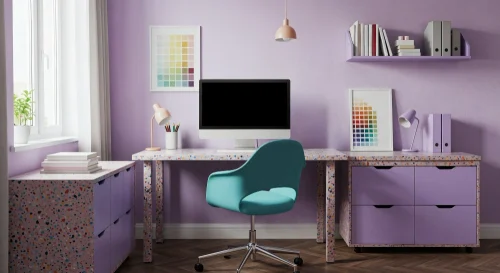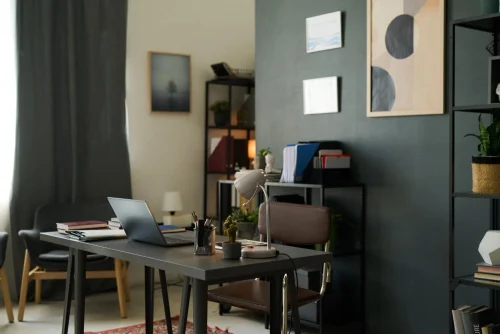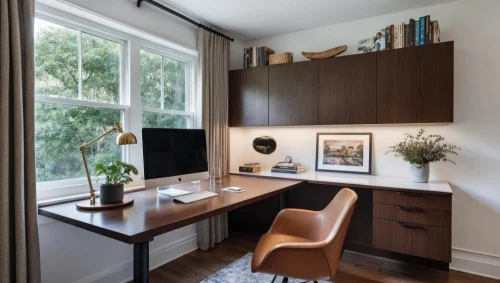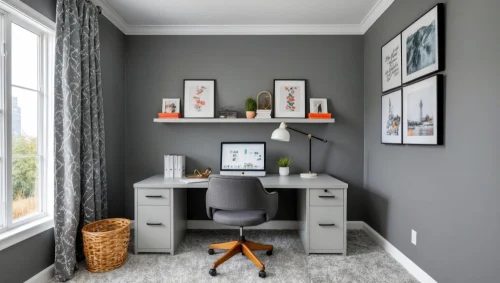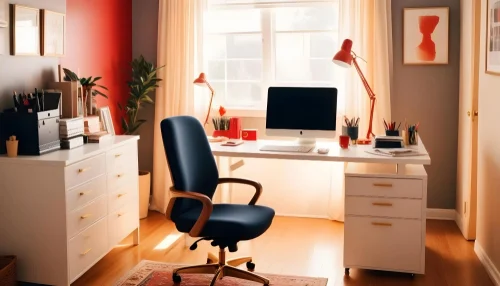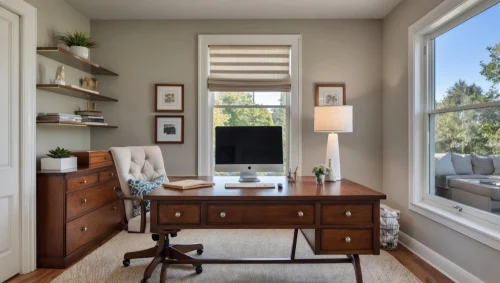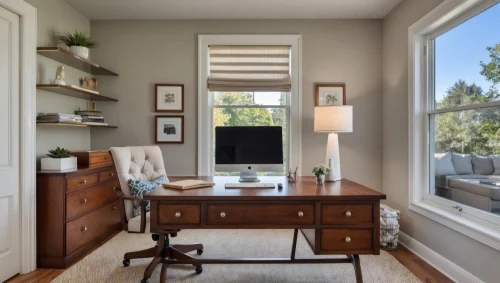
Purv Mukhi Vastu Guidelines: Do’s and Don’ts for East-Facing Homes
June 13, 2025
How to Decode Home Warranties for Complete Protection
June 13, 2025If you’ve been using your couch, bed, or kitchen table as your work area, you might already feel how tiring and uncomfortable that gets. Many people face this when working from home. It’s hard to focus, your back starts to hurt, and your workday feels endless.
The solution? A simple and smart home office design.
Creating a good workspace at home can help you feel better, stay more focused, and enjoy your work hours. The best part? You don’t need a big house or expensive furniture. Just a few thoughtful changes can turn even a small corner into a functional workspace.
Let’s look at some simple, helpful tips to build a home office that really works for you.
Table of contents
- 1. Pick the Right Spot
- 2. Make It Comfortable
- 3. Keep It Clean and Tidy
- 4. Use Good Lighting
- 5. Add Personal Touches
- 6. Use Smart Storage
- 7. Cut Down Digital Distractions
- 8. Think About Your Tech Needs
- 9. Set Work-Life Boundaries
- 10. Make Space for Moving Around
- 11. Reduce Noise
- 12. Use Your Walls
- 13. Think Ahead
- Conclusion: A Good Workspace Makes Work Easier
- Discover GreenFortune - Your Trusted Partner for Top-quality uPVC Windows and Doors.
- FAQs
1. Pick the Right Spot
A good home office design starts with choosing the right place in your home. It doesn’t have to be a whole room. A small corner or a quiet wall can work just fine.
Look for:
- Natural light from a window
- A space away from loud noise or busy areas
- Power outlets nearby
For example, you can turn a small space beside your window into a cozy desk area. These are great small office ideas that save space and still feel like your own.
2. Make It Comfortable
You’ll be sitting in this space for many hours, so comfort matters. If your chair or desk isn’t right, your back, neck, and shoulders will hurt by the end of the day.
Try to have:
- A chair that supports your back
- A desk that lets your arms rest at a natural height
- Your screen is at eye level
A comfortable home office design can keep you pain-free and help you focus better.
3. Keep It Clean and Tidy
Too much stuff on your desk can distract you. A clean space helps your mind feel calm and ready to work.
Try this:
- Use shelves or storage boxes
- Keep only what you need on your desk
- Organize papers and cords neatly
These are simple productivity tips that make a big difference. A clean desk can help you start the day feeling fresh.
4. Use Good Lighting
Poor lighting can make you feel tired or give you headaches. A bright and pleasant space helps you feel more awake and focused.
Use:
- Natural sunlight, if possible
- A desk lamp for evening work
- Overhead lights that light up the whole area
Lighting is an important part of any home office design, especially if you work at different times of the day.
5. Add Personal Touches
You don’t want your workspace to feel boring. A few personal items can make your office feel warm and welcoming.
You can add:
- A small plant
- A photo or a favorite quote
- A piece of art or a soft rug
These little touches make your home office design feel more like your own special space.
Read more - Guide to uPVC Arch Windows for Style and Comfort
6. Use Smart Storage
No matter how small your space is, smart storage can help. A well-organized desk area is a big part of a functional workspace.
Try:
- Wall shelves to save floor space
- Rolling carts to move things easily
- Drawer organizers for pens, paper, and wires
These small office ideas help you stay neat and find what you need quickly.
7. Cut Down Digital Distractions
Even in a quiet room, your phone or computer can distract you. One of the best productivity tips is to manage your digital space, too.
Try:
- Turning off notifications while working
- Using website blockers if you get distracted
- Adding some greens to calm your mind
A simple home office design also includes how you use your screen and apps.
8. Think About Your Tech Needs
Make sure your setup includes space for the devices and tools you use every day.
You’ll need:
- Enough plug points
- A place for your laptop, monitor, and charger
- Good internet connection
Planning for your tech needs helps your home office design run smoothly and saves time every day.
9. Set Work-Life Boundaries
When your home and office are in the same place, it’s easy to lose balance. It helps to set some simple rules to keep work and rest separate.
You can:
- Work only in your chosen space
- Stop working at a fixed time each day
- Avoid checking emails from bed or the sofa
Good home office design can help you separate work from your time, which keeps your mind fresh and reduces stress.
10. Make Space for Moving Around
Even the best chair can’t replace the need to get up and stretch. Moving a little now and then keeps your body happy.
Try:
- Standing for a few minutes every hour
- Keeping a mat nearby for light stretching
- Going for a short walk during breaks
A functional workspace supports movement and doesn’t keep you stuck in one position all day.
Read more - Why Choose uPVC Windows and Doors for Monsoon
11. Reduce Noise
If your home is noisy, it can be hard to focus. A quiet environment helps your brain stay on track.
Simple ways to cut noise:
- Use headphones that block sound
- Add soft items like rugs or curtains to absorb sound
- Play soft background music or nature sounds
These tips are easy to add to your home office design and really help your focus.
12. Use Your Walls
When you don’t have much floor space, go vertical. Using wall space is one of the best small office ideas.
Use:
- A wall-mounted desk
- Floating shelves
- Pegboards or pinboards
These tools help you stay organised without using up your entire room.
13. Think Ahead
As your work or needs grow, your office might need to grow too. Keep your home office design flexible.
Ask yourself:
- Do I need more space later?
- Can I add a second monitor?
- Can this desk move to another room if needed?
Planning now saves effort later and helps your workspace grow with you.
Conclusion: A Good Workspace Makes Work Easier
Creating a home office design that works for you doesn’t have to be hard. With some simple changes, you can make a space that helps you feel better, think clearly, and get more done.
Start with a quiet corner. Add the right chair, desk, and light. Keep things tidy and make it yours with personal touches. Use smart storage, control noise, and don’t forget to move around. These productivity tips and small office ideas will help you build a space that supports your work and your health.
You don’t need a lot of money or space to make a great home office design. Just a little planning can go a long way. Try it today and see how much better your work-from-home life can feel.
Discover GreenFortune - Your Trusted Partner for Top-quality uPVC Windows and Doors.
Green Fortune windows and doors, made with premium UPVC solutions specifically for each application, will add visual appeal and provide long-term performance.
Choose GreenFortune now and experience our extraordinary quality, design, and customer service.
FAQs
1. Do I need a separate room for a home office?
No, not at all. You can create a great home office design even in a small corner or unused space.
- How can I stay focused while working from home?
Start by removing distractions. Keep your functional workspace clean and tidy, set regular work hours, and avoid using your bed or sofa for work.
- What is the most important thing in a home office?
Comfort and quiet. A comfortable chair, good lighting, and a peaceful spot make a big difference. Add storage to keep things neat and make the space your own.




